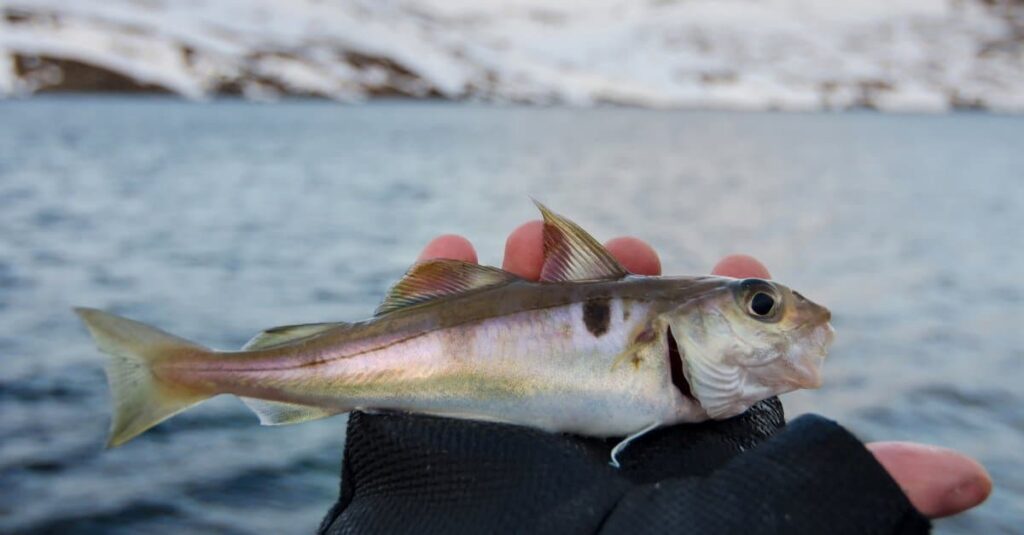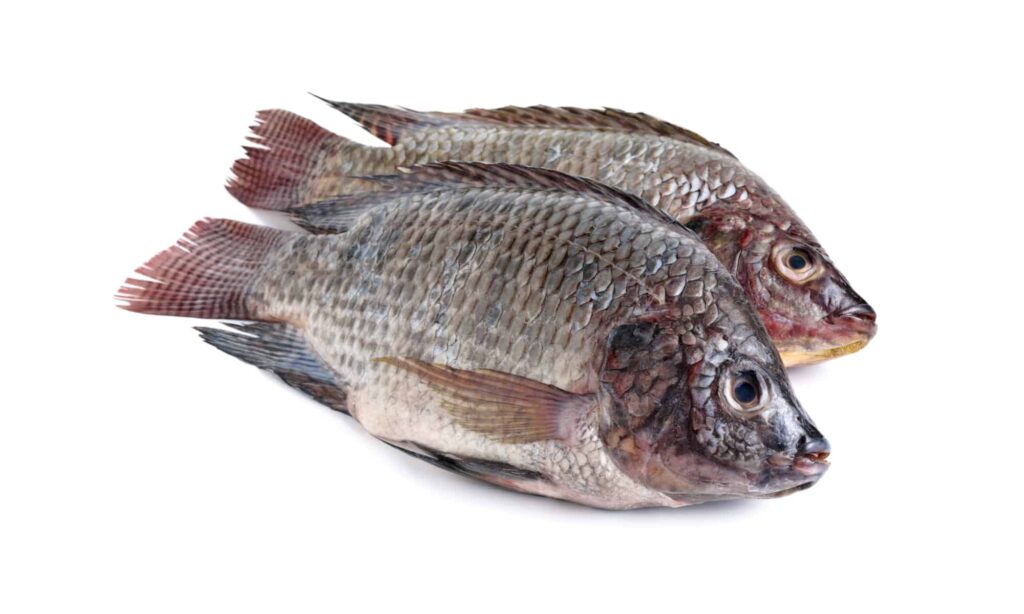Many fish species live in worldwide waters, and since some have similar appearances, people often find it hard to tell them apart. Today, we’re talking about tilapias and haddocks, both famous fish for recreational and commercial fishing.
Tilapias are freshwater fish classified under Perciformes order, which refers to “perch-like” fishes. The term “tilapia” is the common name for many cichlid species that are within the Cichlidae fish family.
Haddocks, however, are saltwater fish belonging to a family of true codfish called the Gadidae. They are officially called Melanogrammus aeglefinus and are part of the Melanogrammus genus.
By highlighting their key features, we can learn how to differentiate them. Let’s take a closer look at tilapias and haddocks’ characteristics to see what makes them unique.
Comparing Tilapia vs. Haddock
| Tilapia | Haddock | |
|---|---|---|
| Size | Length: up to 23.6 inches (60 cm) Weight: up to 11 pounds (5 kg) | Length: 12 to 36 inches (1 to 3 feet) Weight: 2 to 40 pounds (0.9 to 18.14 kg) |
| Appearance | Deep bodies that are sunfish- or crappie-like and can also be easily identified by having a long, heavily spined dorsal fin | Elongated bodies with distinguishable coloring, having blackish or purplish lines along the back and a distinctive marking between the lateral line and the pectoral fin |
| Habitat | Shallow ponds, streams, lakes, rivers, and sometimes found in brackish water | On or near the bottom of lakes and seas |
| Distribution | Native to the freshwaters of Africa and Middle East, but is now also farmed in several countries all over the world | Found on both sides of the North Atlantic from Newfoundland, Cape May, New Jersey, Georges Bank, and the Gulf of Maine |
| Diet | They are omnivores who feed on algae, water plants, plankton, and aquatic invertebrates in the wild and on corn or soybean in farms | These carnivores eat bottom-dwelling animals such as mollusks, crustaceans, worms, sea stars, sea urchins, and even fish eggs |
| Predators | Largemouth bass | Spiny dogfish, gray seals, skates, and other groundfish such as pollock and cod |
| Lifespan | Up to 10 years | 10 or more years |
The Key Differences Between Tilapia and Haddock
Tilapias and haddocks do not have too many things in common. Their differences include appearance, size, diet, distribution, reproduction, and lifespan.
Let’s explore these differences in detail!
Tilapia vs. Haddock: Appearance

Tilapias have deep bodies that are shaped like sunfish or crappie.
©nednapa/Shutterstock.com
Tilapias and haddocks have different physical characteristics that may help you tell them apart. Tilapias have deep bodies that are shaped like sunfish or crappie, and they have a heavily spined dorsal fin. Haddocks have three dorsal fins, two anal fins, and white bellies. One distinctive haddock characteristic is the dark blotch above the pectoral fin, known as the “Devil’s thumbprint.”
Tilapia vs. Haddock: Size

The haddock has a length of 12 to 36 inches.
©Piotr Wawrzyniuk/Shutterstock.com
There is a considerable size difference between the two. The tilapia is a small fish that can measure up to 23.6 inches in length and weigh up to 11 pounds. The haddock is a much bigger fish with a length of 12 to 36 inches (1 to 3 feet) and a weight of 2 to 40 pounds (0.9 to 18.14 kg)
Tilapia vs. Haddock: Diet
Tilapias are omnivores that feed on algae, water plants, plankton, and aquatic invertebrates. They can be considered filter feeders as they harvest plankton by secreting mucus from their gills which traps them. After doing so, they swallow the plankton-rich mucus. They can also feed on larval fish and decaying organic matter.
Haddocks are carnivorous fish that consume bottom-dwelling animals, such as mollusks, crustaceans, sea urchins, sea stars, worms, and fish eggs. Larger adult haddocks also feed on small fish, such as herring.
Tilapia vs. Haddock: Distribution

The haddock is a saltwater fish found on both sides of the North Atlantic from Newfoundland, Cape May, and New Jersey.
©Steven G. Johnson / CC BY-SA 3.0 – License
The tilapia is a freshwater fish native to Africa and the Middle East, but because of its popularity, it is now widespread in many tropical, subtropical, and temperate regions.
On the other hand, the haddock is a saltwater fish found on both sides of the North Atlantic from Newfoundland, Cape May, and New Jersey. It is abundant in the Gulf of Maine and on Georges Bank.
Tilapia vs. Haddock: Predators
In the wild, tilapias are preyed on by largemouth bass. Meanwhile, haddocks are preyed upon by other larger animals, such as grey seals, spiny dogfish, skates, and groundfish species, such as pollock and cod.
Tilapia vs. Haddock: Reproduction

A female tilapia can produce about 200 to 1000 eggs per spawn.
©Yossi James/Shutterstock.com
Tilapias and haddocks reproduce differently. The tilapia reproductive cycle starts when the male tilapia digs a hole in a territory, which eventually becomes a nest. It will constantly guard and care for the nest until the female tilapia is mature enough to spawn.
After spawning, the male fertilizes the eggs. Once fertilization is over, the female collects the eggs and holds them in her mouth. This is done to incubate the egg until the yolk is absorbed. Then, she leaves the nest. An average female tilapia can produce about 200 to 1000 eggs per spawn.
A haddock’s reproducing method is similar to a tilapia’s, except for the fact that the female digs the hole near the ocean floor. Then, a male fertilizes the eggs. Compared to tilapias, haddocks’ population is much larger since female haddocks can produce up to 850,000 eggs per year on average, while larger female haddocks produce up to 3 million.
Tilapia vs. Haddock: Lifespan
Tilapias and haddocks have almost the same lifespan. They are both fast-growing fish and mature at early ages. Tilapias can live up to ten years and grow to at least one pound in just six months.
The average haddock lifespan is ten years. However, most of the haddocks caught by scientists are usually 3 – 7 years old. Haddocks reach sexual maturity when they are 1 – 4 years old.
Up Next:
- Flounder vs Tilapia: How Are They Different?
- The 6 Best Fish to Catch in Delaware This Summer
- Haddock vs Alaska Pollock: The Key Differences
The photo featured at the top of this post is ©
Thank you for reading! Have some feedback for us? Contact the AZ Animals editorial team.







